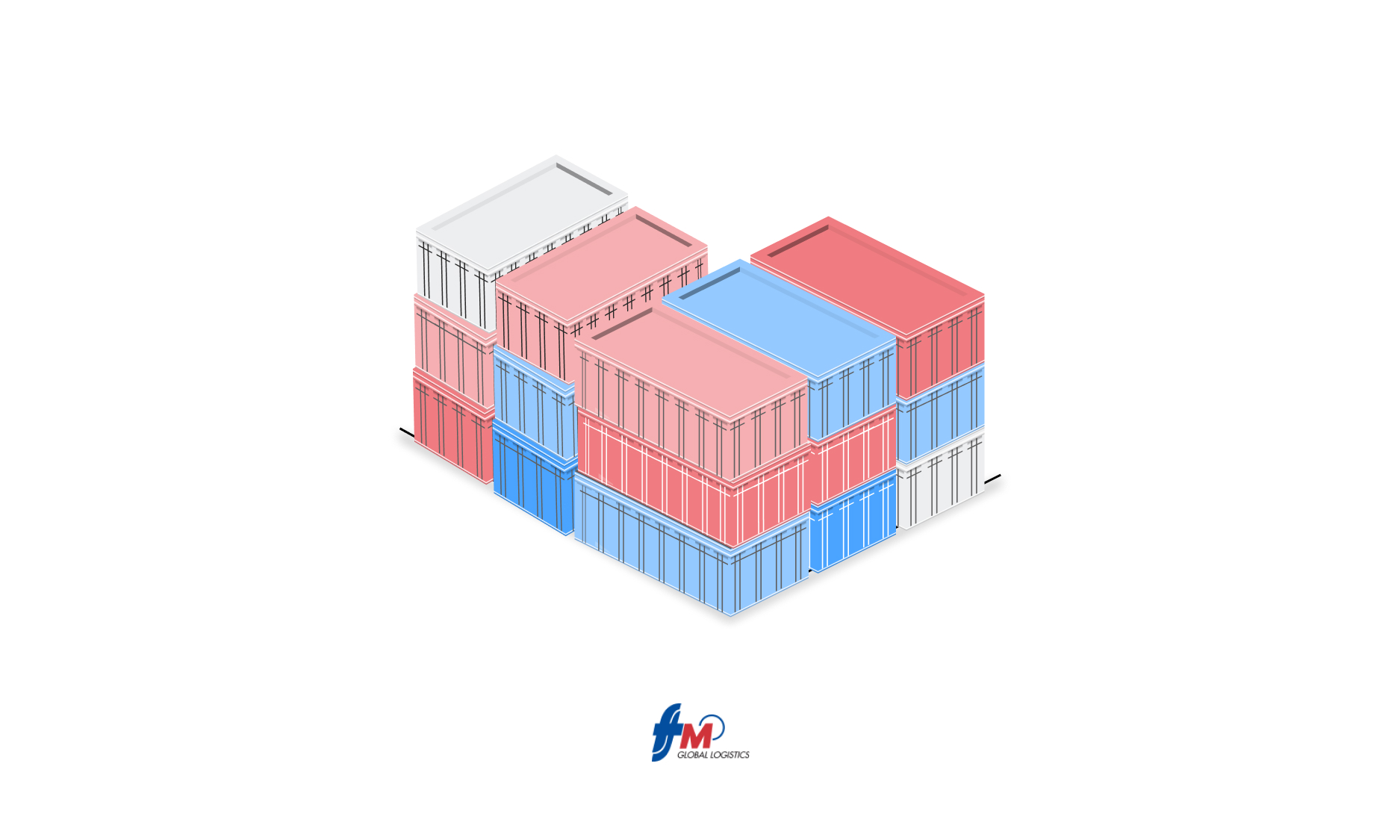What are TEU & FEU?
23 September 2024Recent estimates suggest there are between 20 to 23 million shipping containers in active use worldwide. These containers are crucial for transporting the vast majority of goods shipped internationally. But how do we measure these containers to know exactly how much we’re transporting?
TEU and FEU are standard measurements used to describe container sizes and their capacity. These are essential for managing containerized cargo efficiently.

What are TEU and FEU?
TEU stands for Twenty-foot Equivalent Unit. This term initially referred to a standard 20-foot container but has evolved to represent a unit of measure for any container with a 20-foot length. A TEU container measures 20 feet in length, 8 feet in width, and 8.6 feet in height. The maximum gross weight for a TEU container is about 52,910 pounds (24,000 kilograms), with a payload capacity of around 28,310 kilograms. In terms of volume, a TEU container can hold between 28 to 29 cubic meters (CBM) of goods and can fit 9 to 11 pallets.
FEU stands for Forty-foot Equivalent Unit, and describes a container that is 40 feet long, 8 feet wide, and 8.6 feet high. FEU containers can accommodate more goods than TEU containers can, with a maximum gross weight of approximately 67,200 pounds (30,480 kilograms) and a payload capacity of about 26,730 kilograms. A 40-foot container can hold between 58 to 59 CBM and can fit 20 to 24 pallets.
Why Does Container Size Matter?
Choosing the right container size can have significant benefits:
- Using Space Correctly: Properly sized containers ensure optimal use of space, minimise empty gaps, and preventing overstuffing of goods. This results in safer transport and better protection for the cargo.
- Saving on Costs: Selecting containers that match the volume of cargo can help exporters reduce costs associated with leasing and avoid wastage of container space.
- Efficiency in Loading and Unloading: Handling containers of appropriate sizes streamlines the loading and unloading processes, making operations smoother and quicker.
- Intermodal Transportation: Containers designed for specific cargo sizes maintain stability during transit. This prevents shifting and potential damage, contributing to safer and more efficient transportation.
- Warehousing: Using the right containers can facilitate efficient storage in warehouses and depots. They can be stacked and stored with ease, making for better space management.
What are the Primary Differences between TEU and FEU?
- Measuring Capacity: TEU refers to the capacity of a 20-foot container, while FEU measures the capacity of a 40-foot container.
- Dimensions: TEUs are 20 feet long, while FEUs are 40 feet long.
- Use and Type of Cargo: TEUs are ideal for smaller shipments, such as pallets of clothing or electronics. FEUs are used for bulkier items, like automobiles, due to their larger size.
Converting between TEU and FEU
To convert between TEU and FEU, remember that 2 TEUs equal 1 FEU.
For containers larger than the standard 40 feet, such as 45-foot or 53-foot containers, you would use a proportionate number of TEUs for measurement. For example, a 45-foot container is equivalent to approximately 2.25 TEUs.
Conclusion
Understanding what TEU and FEU means is crucial for anyone involved in the logistics and shipping industry. These standard measurements help streamline global trade by ensuring that containers are used efficiently, costs are controlled, and cargo is handled safely. So, the next time you see a container on a ship or at a port, you’ll have a better appreciation of the important role it plays in keeping the logistics industry going!



